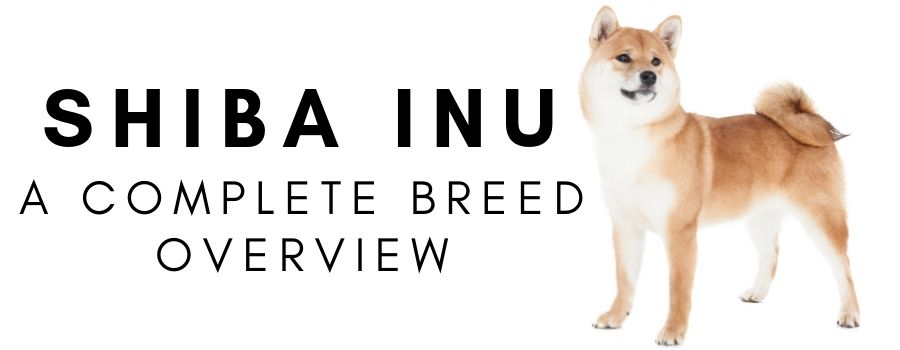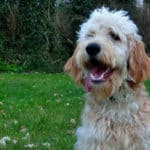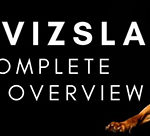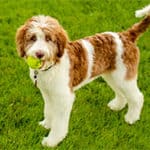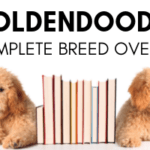A Brief History
Shiba Inu originated in Japan as early as 300 B.C. and are the oldest and smallest of the Japanese breeds. The breed was first brought to the United States in 1954, and in 1997, Shiba Inu acquired full status in the Non-Sporting Group by the American Kennel Club (AKC). Today, they are Japan’s number one companion animal and America’s 44th most popular breed.
Because of Shiba Inu’s courageous, independent nature and keen senses, the breed was originally used to flush birds and small game. Due to bombing raids and a distemper outbreak, the breed almost disappeared after World War II but was brought back thanks to the efforts of dedicated breed recovery programs.
In Japanese, the word Shiba means brushwood and Inu means dog. This “brushwood” dog was probably named for the brush in which he hunted or for the red coloring of the brushwood leaves in autumn.
Temperament – Personality
Commonly referred to as a primitive breed, the Shiba Inu has managed through the years to retain several “wild” characteristics such as resourcefulness, tendency to roam, and a highly-developed prey drive. These instincts account for the aloofness and independent nature associated with the breed today.
While Shiba Inu are generally good-natured dogs with refined demeanor, their notorious stubborn streak coupled with a bold, confident attitude can make training difficult. Ironically, because they prefer to keep themselves clean, this breed is usually quite easy to house train.
The breed’s strong-willed spirit is countered nicely by their loyalty, playfulness, and intelligence. While popular as companions, this breed is not known for being overly affectionate or eager to please. In fact, instances of aggression are not entirely uncommon.
Is a Shiba Inu a Good Family Dog?
A Shiba Inu can be a wonderful family dog as long as the family has a thorough understanding of the breed, is aware of its unique personality quirks, and has plenty of experience with dogs.
While most are not overly affectionate, Shiba Inu are often praised for their loyalty and their ability to coexist in quiet, dignified companionship with those they love.
Are Shiba Inu Good With Kids?
If raised with children and well socialized from a young age, Shiba Inu can get along well with older children who know how to properly behave around dogs. However, the breed is known for being protective of toys, food, and territory and does not tolerate being grabbed or tightly held.
This breed, due to its tendency to aggressively defend its possessions and its intolerance of any rough treatment, is not recommended for young children. The risk is simply too great.
Physical Traits – Size, Weight, Coat
The Shiba Inu is a medium-size breed that is often described as fox-like in appearance. The body is well-muscled, well proportioned, compact, and sturdy. Overall well-balanced and symmetrical, a Shiba Inu is agile and strong with a smooth, graceful stride.
Featuring upright, triangular ears and a brush-like tail with a distinctive curl, the Shiba Inu always appears alert, inquisitive, and intelligent.
Height
According to the AKC breed standard, Shibu Inu males should reach a mature height of 14.5 – 16.5 inches at the withers. The females are slightly shorter, measuring 13.5 – 15.5 inches and have softer, feminine features though are not in any way structurally weaker than their male counterparts.
Weight
An individual Shiba Inu should never exceed 25 pounds in weight. AKC standards call for males to be close to the 23-pound mark and females to be approximately 17 pounds. Proper exercise and diet will help prevent excessive weight gain.
Coat
The double coat of the Shiba Inu is dense and thick with a course, protective outer layer and a plush undercoat. The coat is said to be rather self-cleaning in that it tends to repel dirt rather than trap it. Because of this feature, the breed is known for being clean and odor-free.
There are three preferred coat colors: red (the original color and most common), sesame (black-tipped hairs interspersed among the red), and black and tan. Although there is a cream color variation, this color is considered to be a serious fault in the show ring.
All Shiba Inu should show the classic Urajiro markings. Urajiro is a Japanese term which, loosely translated, means “underside white.” Shiba Inu’s coat color should fade to white on the chest, sides of muzzle, neck, abdomen, underside of tail, and inside of ears and legs.
Due to the thick double coat of this breed, care should be taken during hot weather or vigorous activity to avoid overheating.
Do Shiba Inus Shed?
Yes, Shiba Inu do shed. In addition to the regular cycle of older hair being replaced by the new, for a few weeks each spring and again in the fall, Shiba Inu will “blow their coats,” meaning that they will shed their entire undercoat during this time.
When seasonal shedding occurs, the soft, fluffy hair will often come out in large clumps giving the dog a ragged appearance until the process is complete. Daily brushing can help to speed the process and frequent vacuuming will keep the mess to a minimum.
Care and Maintenance
Although Shiba Inu are not a high-maintenance breed, there are some requirements that should not be overlooked. In order to enjoy a well-rounded, well-adjusted dog who leads a fulfilling existence, owners must be responsible for supplying their dog’s physical and mental needs.
Socializing
Proper socialization beginning at an early age is critical for any puppy but even more so for a Shiba Inu. The amount and type of socialization he receives will shape his future behavior, temperament, social skills, and mental well being. Be sure to check out our socialization guide and checklist, here.
A responsible breeder will have already started the socialization process before you bring your puppy home, but this is only the beginning. The rest is up to you. Keep in mind that one of the most crucial learning periods occurs between the ages of two to four months.
The key to effectively socializing a Shiba Inu is exposure. Exposing him to as many different sights, sounds, smells, people, dogs, cats, noises, and situations as possible will give him the confidence that he needs to aptly navigate life and provide you with the opportunity to guide and correct his behavior as he encounters each new experience.
Do Shiba Inus Need to Be Groomed?
Like all dog breeds, Shiba Inu do require regular grooming, though the work is minimal compared to other breeds.
A thorough brushing once a week or even once every two weeks to remove loose hairs and debris from the coat is usually adequate. However, during the biannual shedding periods, a daily brushing will be necessary.
Tasks such as ear cleaning, nail trimming, and tooth brushing should not be neglected as they contribute to a dog’s overall health and well being. These routine procedures should be implemented when the dog is quite young so that he becomes resigned to the fact that some beauty regimens are not optional.
A grooming session is an ideal time to check for any issues that may have otherwise gone undetected. Carefully examine your dog for fleas, ticks, swellings, cuts, tender areas, and any other signs of injury while you groom.
How Often Should You Bathe a Shiba Inu?
Thanks to the breed’s thick, dirt-repelling coat, Shiba Inu do not require baths very often. In fact, frequent bathing can strip the skin of its natural protective oils and leave it dry and therefore prone to infection or other problems.
Under ordinary circumstances, one bath every three to four months is usually sufficient. Some owners only bathe their dog twice a year. Shiba Inu seem to take great pride in their appearance and normally keep themselves quite clean making them a rather low-maintenance breed.
How Much Exercise Do Shiba Inus Need?
Shiba Inu are active dogs that do require some form of exercise on a daily basis. Typically a long, daily walk or a brisk jog will be enough. Energy levels can differ greatly from dog to dog, so adjust the exercise routine to suit your particular dog’s needs.
If walking or jogging the same route day after day becomes a bit monotonous, try taking your Shiba Inu for a hike or engaging him with some backyard dog games like fetch for a change of pace.
Mental Stimulation
The average Shiba Inu is very intelligent and without adequate mental stimulation can become destructive.
One simple way to exercise his mind is to go for a walk in a different neighborhood. A walk is very much a sensory experience for dogs and the new sights and sounds will send his mind into overdrive.
Other ideas for exercising his mind include:
- treat-stuffed toys.
- puzzle games.
- hiding treats throughout the house.
- playing hide-and-seek.
Food and Nutrition
To remain healthy and in top shape, Shiba Inu should be fed a high-quality dog food preferably with beef, poultry, fish, or lamb as the first listed ingredient. Remember that many “people” foods such as chocolate can be dangerous for dogs and should be avoided.
For owners desiring a more natural diet for their dog as opposed to commercially prepared kibble, carefully research a dog’s daily nutritional requirements first to ensure that all of the nutrients, vitamins, and minerals needed will be provided in the chosen diet.
Health Issues – Common Health Issues and Special Needs
Do Shiba Inus Have Health Issues?
The Shiba Inu is a relatively healthy breed and many individuals will go through life with no issues at all. Though, as is the case with all purebred dogs, certain maladies are more commonly seen than others within the breed.
The breed is slightly prone to several eye disorders such as glaucoma, cataracts, and entropion, all of which can be successfully treated. Progressive Retinal Atrophy, for which there is no treatment, can also occur and lead to blindness.
Some Shiba Inu are plagued by allergies. Common triggers include fleas, pollutants, chemicals, and food additives. A veterinarian can help identify the allergen and treat the symptoms accordingly.
Disorders involving the hip and knee joints can show up in Shiba Inu. Hip Dysplasia, common to many breeds, can cause lameness and while severity can vary, is often treatable. Patellar Luxation involves the kneecap slipping out of place, causing an abnormal gait.
Epilepsy, cancer, and chylothorax (accumulation of fluid in the chest) also appear in the breed as does hypothyroidism which can cause lethargy, hair loss, and obesity. All of these disorders can often be treated successfully with medication, dietary changes, or surgery.
Many of the above-mentioned conditions can be largely avoided by purchasing dogs from reputable, responsible breeders who strive to breed only healthy dogs and show a keen interest in eliminating certain disorders from the breed’s gene pool.
Screenings and Tests
There are three evaluation tests that are recommended by both the AKC and The National Shiba Club of America. Responsible breeders should have each test performed on all dogs before breeding takes place. Results may be submitted to the Orthopedic Foundation for Animals (OFA) and the Canine Health Information Center (CHIC) where they will be made available for public viewing.
- Hip evaluation – either OFA or PennHip (University of Pennsylvania Hip Improvement Program) certification
- Patella evaluation – OFA certification.
- Ophthalmologist evaluation – OFA certification.
Breeders should willingly provide health certifications and openly discuss any health issues that they have encountered. Breeders who do not routinely test their animals and who are not open to discussing health issues should be avoided.
There are dedicated, responsible, honest breeders out there. Do not settle for second rate. Less than ideal breeders produce less than ideal dogs.
In addition to the three recommended tests, there are also screenings available to detect a wide variety of abnormalities. Some screenings are designed to detect early cancer formation. Others screen for problems with the heart, kidneys or liver.
Advances in medicine and technology can greatly benefit people and animals alike. If you feel the need to have your dog tested for either peace of mind or because you suspect a problem, take advantage of the many testing options that are currently available.
Special Needs
While the low-maintenance Shiba Inu doesn’t have a long list of special needs, there are issues that owners should definitely be aware of.
Due to the breed’s stubborn inclinations, they can be a challenge to train. Obedience classes are highly recommended and proper socialization can’t be overemphasized. Patience, consistency, and repetition will be needed to produce results.
The breed also has a reputation of being occasionally aggressive. Socialization, training, and overseeing all interactions with people and other dogs will go a long way in preventing aggression issues. Dogs from esteemed breeders are much less likely to show aggression.
Roles – What Are Shiba Inus Best Suited For?
Today, Shiba Inu are mainly companion animals. Although they were hunting dogs in the past and still possess a strong prey drive, they tend to not get along very well with other dogs and can not be trusted off-leash unless they are extremely well trained.
Shiba Inu are usually not excessive barkers; however, they can be excellent watchdogs. They have a sharp sense of hearing, intuitively know when something is not right, are wary of strangers, and are good judges of people’s character. They will not hesitate to alert you if something is amiss.
Cost – Breeder or Adoption Tips and Costs
When shopping for a Shiba Inu, be wary of backyard breeders. Typical backyard breeders breed only for profit, and due to their lack of knowledge and experience, often produce puppies who do not adhere to breed standards and have numerous health and behavioral issues.
Steer clear of pet stores as well in your quest for a Shiba Inu. Pet store dogs almost always are products of puppy mills and in nearly all cases, are of inferior quality, sometimes inbred, and usually raised in cruel conditions.
Listings of reputable breeders can be found at AKC Marketplace, National Shiba Club of America (NSCA), and My First Shiba also has a listing of rescue groups if you’d prefer to adopt a Shiba Inu in need.
Bypass any breeder who raises multiple dog breeds, will not allow viewing of the puppies’ living conditions, offers no health guarantees or written contracts, and does not take the time to discuss the breed with you.
How Much Does a Shiba Inu Cost?
Shiba Inu with limited registration, that is, those who are meant to be sold strictly as pets, can cost anywhere from $1,000 to $2,200. Dogs from show lines with full registrations can run between $2,000 to $3,500.
Pet: $1,000 – $2,200
Pure Bred: $2,000 – $3,500
Adoption: $100 – $400
Adopting a Shiba Inu from a rescue group can be considerably less expensive, but prices can still vary quite a bit. Generally, adoption costs will run between $150 and $400. Bear in mind that adoption costs are usually less than what the organization actually spent on care and rehabilitation for the dog.

